“Those who seek paradise on Earth should come to Dubrovnik.” –George Bernard Shaw (Irish playwright, 1856-1950)
We’re excited to continue traveling “Through the Realms” with Becky Sparagowski, another world traveler who has lived abroad for the past three years in Poland, Sicily, and is currently residing in Edinburgh. In fact, Becky and I first met each other while studying abroad in Rome in 2012, where we shared our love of food and travel, and enjoyed exploring bellissima Italia together (also with Katie Christensen, who recently told us about Cuba). Little did we know that our love of travel would reunite us over four years later…at the University of Edinburgh, where we unexpectedly ran into each other!
While Becky has spent most of her time traveling in the places she’s lived during the past three years, she’s also visited Germany, the Czech Republic, Austria, and earlier this month, went on a weekend excursion to Dubrovnik, Croatia (a city located in the southern part of the country, famously dubbed “the Pearl of the Adriatic” and known for its Old Town, which is encircled with massive stone walls completed in the 16th century).
Becky’s documented a lot of her adventures on her travel blog, Aspar Adventures, where her motto is to “Read, Eat, Travel” – everything we love to do!
We asked her to share a bit of her experience from Croatia with us, and here’s what she had to say:
Meet Becky
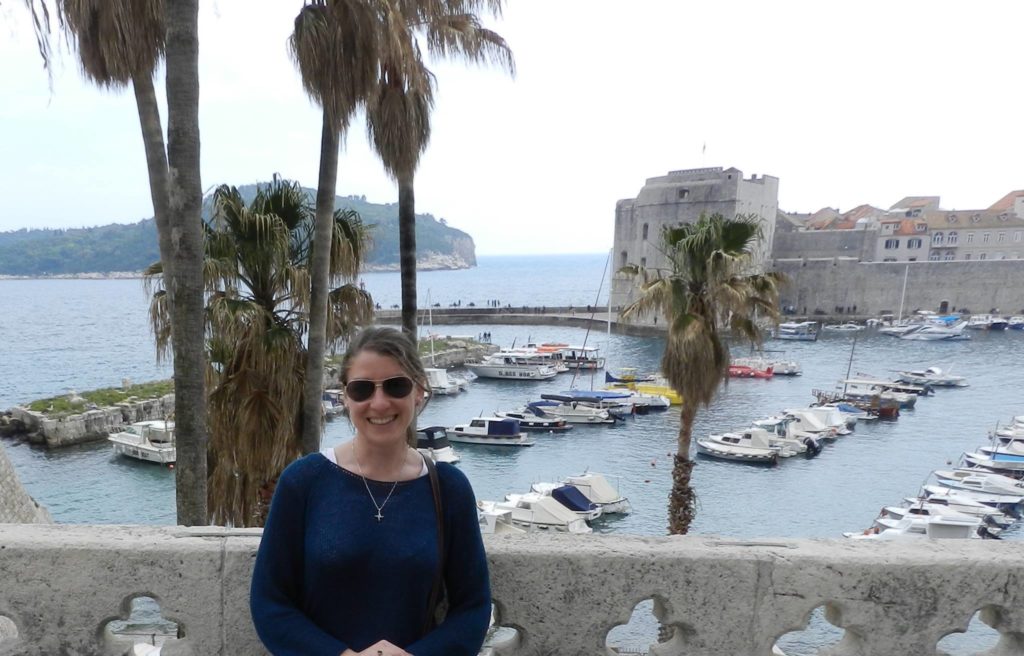
Hometown: Mount Clemens, Michigan (near Detroit)
Age: 25
Occupation: Completing a MSc in Book History and Material Culture at the University of Edinburgh; formerly an English as a Second Language (ESL) instructor
In her own words: “I’m a lover of languages, literature, and food. I caught the travel bug when I studied abroad in college, and never really went home after that. After I graduated, I earned my certificate in Teaching English as a Foreign Language (TEFL) and took off to Europe, where I’ve been for the last three years.”
ATG Note: If you’re like us and are intrigued by the idea of studying Book History and Material Culture, check out these posts by Becky on the University of Edinburgh’s blog: “The Art of Chromolithography” and “Digitisation: Metadata – so much more than data entry“.
The reason you chose to go to Croatia:
My friends and I were looking for somewhere warm to go for a weekend away after turning in term papers. After looking for cheap flights from Edinburgh, we settled on Dubrovnik. I’ve wanted to go to Croatia for a while because everyone says that it’s so beautiful – I was looking forward to eating some good seafood and drinking wine while watching a legendary Croatian sunset.

Your thoughts about Croatia before arriving:
I’d met some Croatian people over the summer, almost all of whom were from Zagreb. From what they told me, Zagreb was a very cool place, very modern but with a small-town feel. They also told me about lingering political problems from the Wars of Independence in the 1990s. Those things gave me some conflicting perceptions about Croatia; you hear horrible stories of things that have happened in the Balkan region, but you also hear about how wonderful it is.
I know lots of people who go to Croatia for beach vacations every year, so I knew it must not be so distraught as its recent history would lead you to believe. I got the feeling that Croatia was doing its best to move on from its past and embrace its colorful and rich culture again.
“I got the feeling that Croatia was doing its best to move on from its past and embrace its colorful and rich culture again.”
A thought you had when you stepped foot in Croatia:
“Wow.” Our flight landed in Dubrovnik just as the sun was starting to go down, and it was amazingly beautiful. The landscape is very craggy, full of rocks and cliffs, and with the bright orange sunset reflecting off of them, it looked just like a postcard.
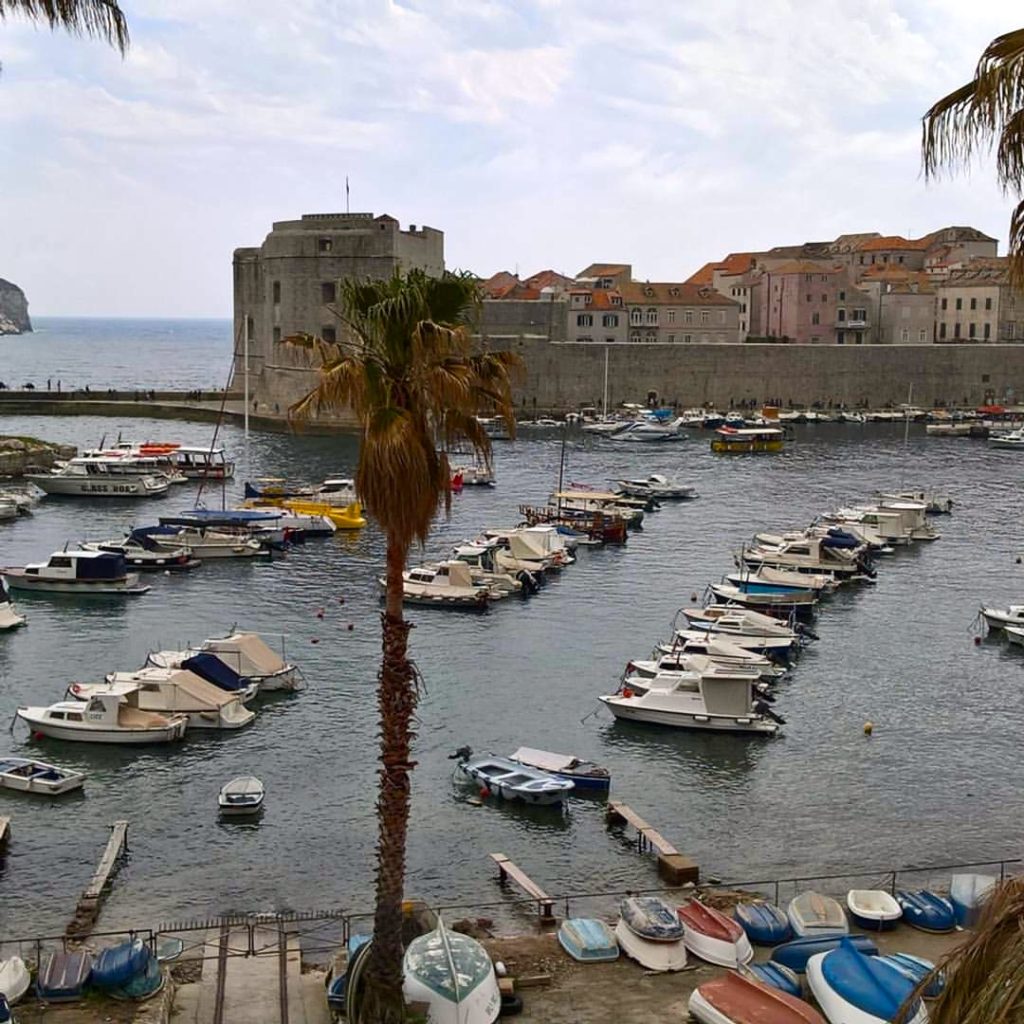
An observation about the people…
The people seemed to be a mix of the typical, Mediterranean easy-goers and perfectionists. Meals take a long time, and people stroll slowly through the streets, but everyone I met was very precise in what they said and did. I also noticed a rather ironic sense of humor among them. Perhaps because Dubrovnik depends so much upon the tourist industry, the people have developed a way to poke fun at the tourists without sounding like they’re making a joke. But, even this practice has its limits, and the Croatian people are generally quite friendly.
“The people seemed to be a mix of the typical, Mediterranean easy-goers and perfectionists. Meals take a long time, and people stroll slowly through the streets, but everyone I met was very precise in what they said and did.”
An observation about the culture…
I found the Croatian culture fascinating! The Croatian language is Slavic in origin, but the country itself is in the Mediterranean region, making it an interesting blend of Eastern European and Mediterranean cultures. I’ve spent time in both Poland and Italy, and those are two of my favorite places. In Croatia, I saw the things I loved about Poland mixed with the things I loved about Italy: the people are very relaxed, but also very dedicated to their work; the food came in large portions, was delicious, and quite cheap; the city itself was designed for practical matters (i.e., the impenetrable city walls and wide main avenues), but it was definitely also designed with aesthetics in mind. It was a wonderful melting pot of different languages, mindsets, and values, and it worked and was beautiful.
“In Croatia, I saw the things I loved about Poland mixed with the things I loved about Italy: the people are very relaxed, but also very dedicated to their work; the food came in large portions, was delicious, and quite cheap; the city itself was designed for practical matters…”

An observation about Croatia as a country…
Croatia seems to be working to come back from the devastation of the wars in the 1990s by embracing what it has. In the last 10 or 15 years, they’ve promoted their tourism industry, making the most of the fact that the countryside is perfect for people looking for a beach holiday and for people looking to go hiking. The shipbuilding business is also very important, as the country has a huge coastline and amazing seafaring culture.
Perhaps most interestingly, Croatia has optimized even its most ancient assets, as they’ve played host to several major film sets recently, most notably Star Wars and Game of Thrones – the locals, it should be noted, have taken full advantage of this, and everywhere you turn in Dubrovnik there’s a Game of Thrones something. On the main street, there’s a gift shop that sells exclusively Game of Thrones and Star Wars memorabilia, and Game of Thrones tours are a dime a dozen. Even non-themed tours are making the most of it, and I walked by a tour guide who was explaining to his group how his high school chemistry teacher was one of the boat rowers in the scene where Myrcella is sent off to Dorne.
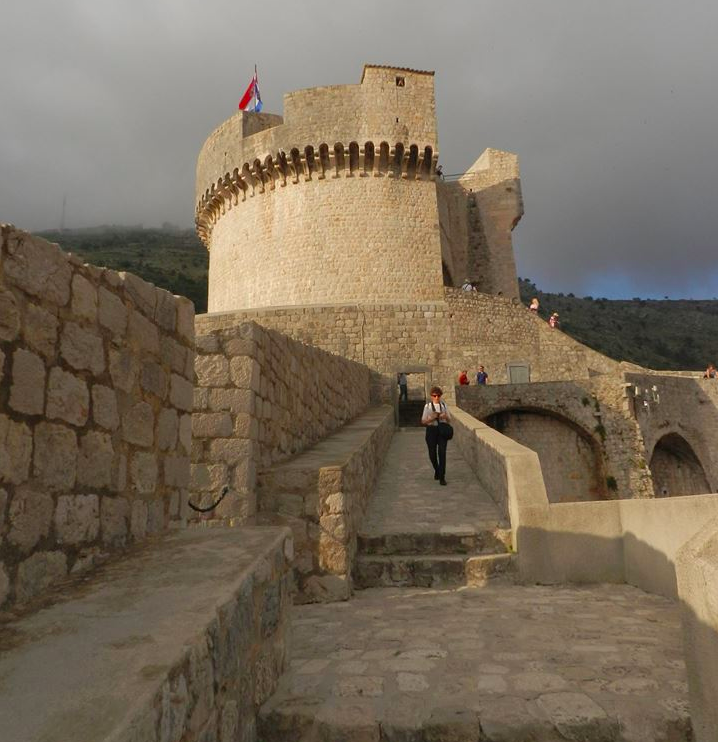
A question that arose from something you saw (or something that made you think):
At the top of Mount Srđ, just outside the Old City, there’s an exhibit dedicated to the Wars of Independence, or the ‘Home Wars’ as the sign read. That was the only reference or reminder I saw of the wars in all of Dubrovnik. If you didn’t know about the Yugoslav Wars or the connected conflicts before you went to Dubrovnik, you might not have ever learned anything about them or the effect that they had on the nation as a whole.
Other countries tend to put up memorials to their wars (just think of how many markers there are for Civil War or even Revolutionary War battles in the U.S.), but there didn’t seem to be any – or at least not very many – in Dubrovnik. The situation could be different in other cities around the country, as we were only in Croatia for a long weekend and only had time to visit Dubrovnik, but the absence of war memorials stuck out to me. Perhaps the memory of those wars is still too fresh, which would – to me, at least – make the present flourishing of the country all the more impressive.
“If you didn’t know about the Yugoslav Wars or the connected conflicts before you went to Dubrovnik, you might not have ever learned anything about them or the effect that they had on the nation as a whole.”
A time you wish you could have spoken Croatian:
I always wish I could speak the language! To be honest, though, in Dubrovnik, most people can speak English, and can speak it very well. For us, the most difficult linguistic problem was reading the menus in restaurants.
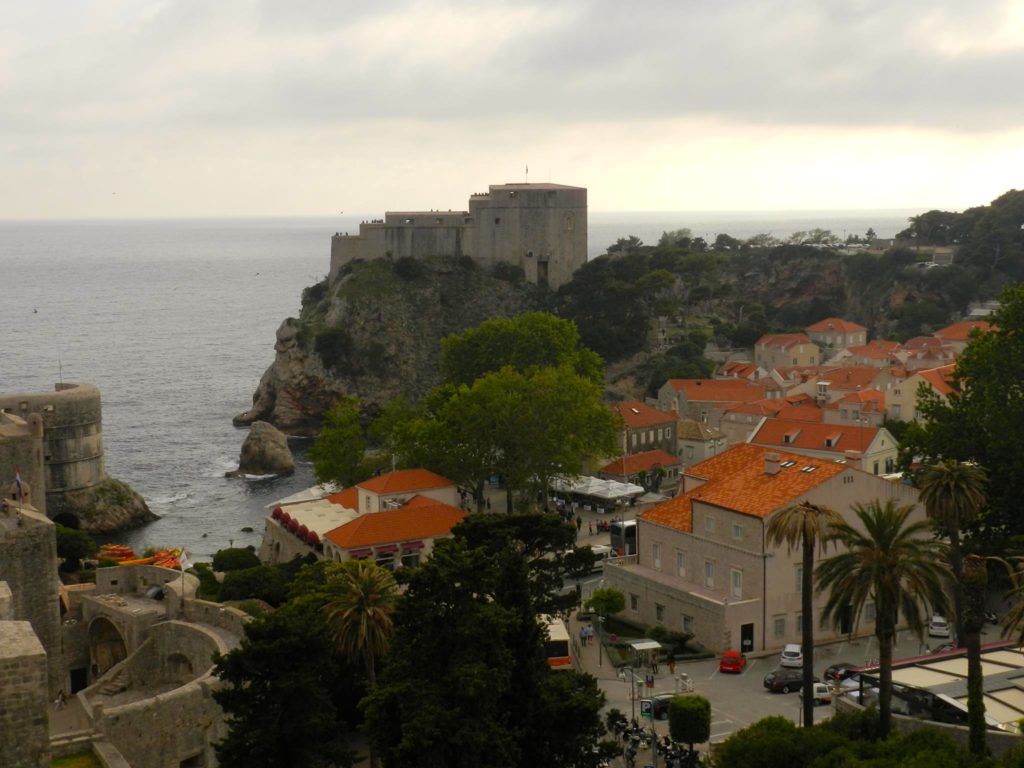
An interesting person you observed from afar:
As we walked by St. Blaise’s Church one afternoon, there was a couple coming out who had just gotten married. Of course, we stopped to watch all the congratulations and well-wishing as the couple left the church. As we watched, the wedding guests formed a circle around the couple, and someone brought out some instruments, and the couple’s first dance as husband and wife took place in the main square of town, with all their wedding guests and the people in the restaurant across the way and passersby clapping along. The couple was then processed down the main street – I’m not sure where they went after that, but I thought that was an amazing show of community and celebration of that couple’s new life together.
“As we watched, the wedding guests formed a circle around the couple, and someone brought out some instruments, and the couple’s first dance as husband and wife took place in the main square of town…”
Your favorite activity:
We went on a kayaking tour that started from Pile Bay on the north side of the Old City, went around the city walls, stopped at a cave beach for a quick swim, and then around the island of Lokrum and back to Pile Bay. My arms were so sore after that – there were some pretty big waves that day – but it was great. Sitting so low in the water, you could really see just how massive the city walls are, and there are no words to describe how amazing the water is. In some spots, it’s so clear that you can see fifteen feet down without any problem.
A moment you wish you could have frozen in time:
Our last night in Dubrovnik, we decided to go for a nice dinner in a restaurant down by the harbor. We sat on the patio while the sun went down, eating and drinking in the Mediterranean fashion (meaning, we took a long time). Later in the evening, a pianist came out and serenaded the patio with show tunes and Sinatra, and we got a second bottle of wine just to sit and listen to him. We had good food, good company, and an amazing view.
A sight that left you marveling:
From the top of Mount Srđ, the view of Dubrovnik, the sea, and the craggy coastline are magnificent. You can see for miles up and down the coast, out over the Old City, and all the islands that dot the coast.
A photo you took that comes to mind when you think of your trip (and the story behind it):
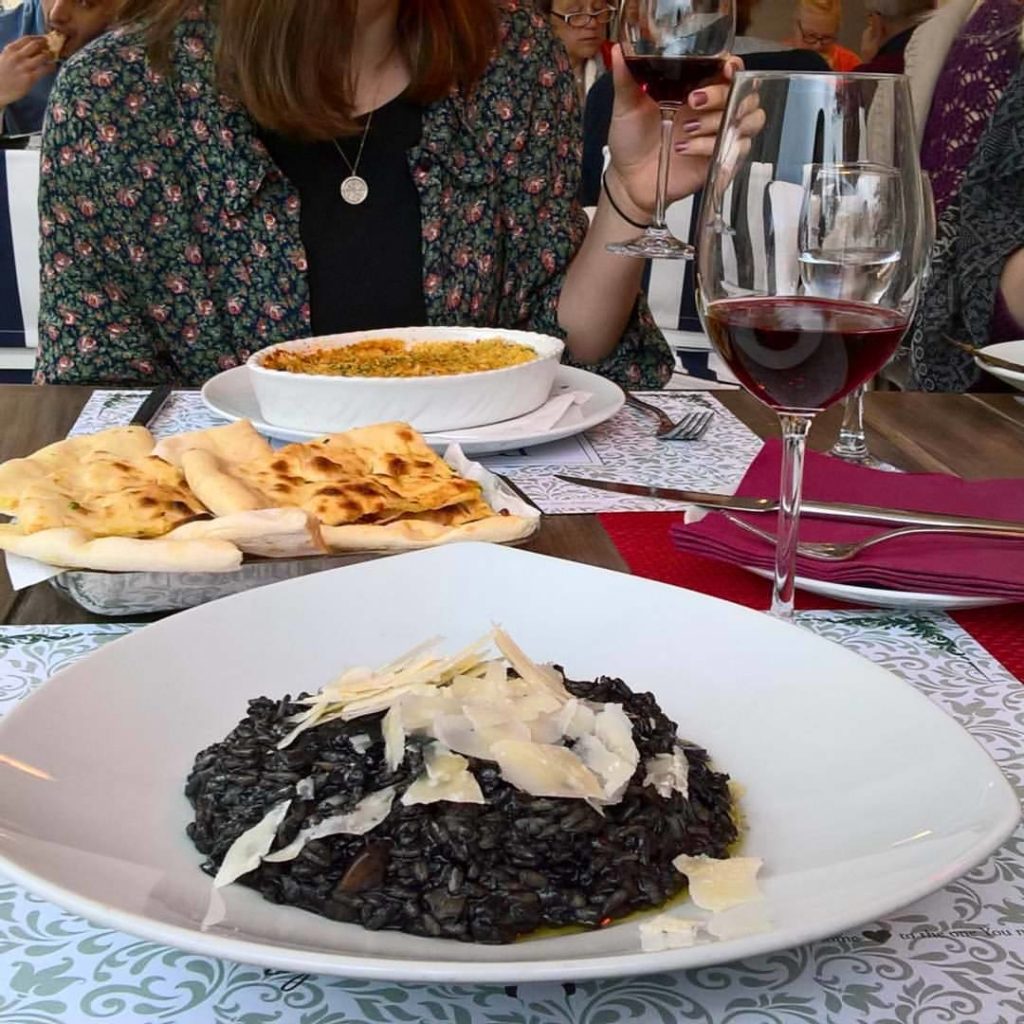
All trip, I was doing that awful tourist thing where I took a picture of all my food before I ate it. At dinner on our last night in Dubrovnik, I ordered a local dish, which I’d seen on menus in other restaurants around town and finally decided to try: crni rižoto, or cuttlefish risotto.
When I ordered it, I wasn’t even sure what a cuttlefish looked like (I’ve since looked it up, and it’s a bit disconcerting to know I ate that), let alone what it tasted like, but I thought I’d be adventurous and give it a go. Cuttlefish risotto is made with the ink of the cuttlefish, so the risotto is actually black. The restaurant we were in served it with parmesan shavings on top, so it actually looked really pretty, I thought. I snapped a picture of it and posted it to Instagram and Facebook, and the responses I got to it from people back home were less than enthusiastic. My mom actually said, “Well, the cheese on top looks good…” Even so, it got the most likes of any of the pictures I posted from the trip – maybe people were just impressed that I actually ate it!
“When I ordered it, I wasn’t even sure what a cuttlefish looked like (I’ve since looked it up, and it’s a bit disconcerting to know I ate that), let alone what it tasted like…”
That moment when you thought, “Life doesn’t get any better than this”:
Up on top of the city walls, there are several cafés where you can sit down and have a drink to break up the walk around the walls. We stopped in one of these and ordered some beers, then sat for a bit, chit chatting and enjoying the view.
A memory you’ll hold onto:
When we first arrived in Croatia, we all kind of geeked out a bit. None of us could stop smiling, even though we were exhausted from working all day and then catching a late-afternoon flight. All of us were a bit apprehensive about going away for a long weekend when there was still so much work for us to do (dissertation season is upon us), but all of that melted away on the bus ride into town, as we peeled off our Scottish-style weatherproofing layers and watched the city lights come on.
A souvenir you bought that you’ll always treasure:
I collect those tacky shot glasses you see in tourist traps, with the name of the city painted onto them. I try to get one from every place I go. Despite the fact that some people raise their eyebrows at collecting drinking paraphernalia, it makes me happy to see all of the places on my shelf back home. In Dubrovnik, I got a hand-painted shot glass with a view of the city walls from the sea painted onto it, with the city name underneath.
Something you did/tried that you’ve never done/tried before:
While on the kayaking trip, we took a break at a cave beach, and I jumped in the water – it was just too pretty not to go swimming in. I’d realized that I’d never swum in the Mediterranean before, even though I lived right on the beach in Sicily last year. The water was a bit chilly, but it felt so nice to be paddling around in that clear blue water.

The most memorable meal you had:
Probably that cuttlefish risotto! Washed down with local wine and followed by a citrus tart and some of the best vanilla ice cream I’ve ever had.
A reason to go back:
I’d love to see more of the countryside! I feel like I’ve just scratched the surface by only visiting Dubrovnik. Also, the food was incredible.
A reason to encourage others to go:
Croatia was spectacular. The scenery is stunning, the architecture is magnificent, and the city walls are striking. Even if you’re just looking to sit somewhere and relax, Dubrovnik is great for that. There’s sunshine, seaside, and good wine to drink while you enjoy them.
“Croatia was spectacular. The scenery is stunning, the architecture is magnificent, and the city walls are striking.”
Something you wish you knew/did before you went:
I would have liked to have known a bit more about the history of the city before I went. I knew a bit about the Balkan region during the Yugoslav Wars, but it would have been nice to know something about the country’s heyday.
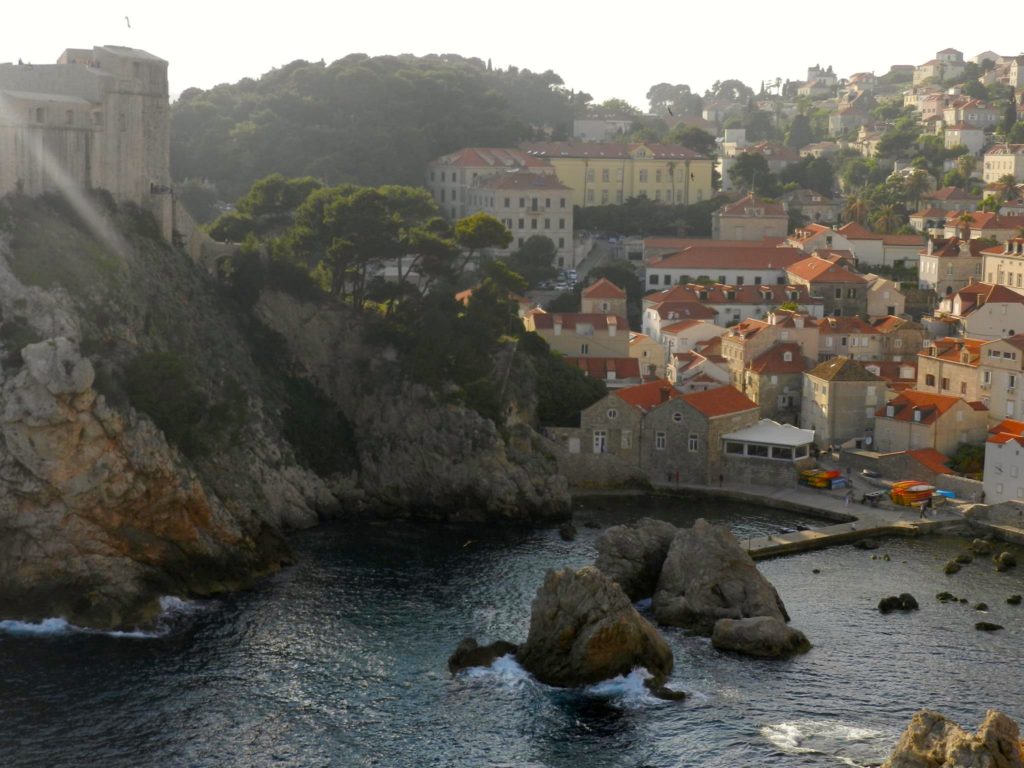
A tip or two to pass on to future Croatia travelers:
Have a currency conversion downloaded on your phone, or someplace you can easily get to it. The Croatian currency isn’t very strong against the euro at the moment (1 euro is equal to roughly 7 Kuna right now). Because Dubrovnik has such a large tourist industry, many of the prices in shops and restaurants are set in euros and then listed in Kuna, so if you don’t know the conversion, you might pay more than you expect for something. That being said, I don’t think Dubrovnik was as ridiculously expensive as some travel blogs make it seem. The most we ever paid for dinner – and we had some nice dinners – was about 16€ per person.
I would also suggest reading up on the history of the city before you go. Once you know that those city walls were never breached and that Croatia has a very Game of Thrones-like past, the Old City becomes a whole lot more interesting!
“Once you know that those city walls were never breached and that Croatia has a very Game of Thrones-like past, the Old City becomes a whole lot more interesting!”
What you think about Croatia now that you’ve been:
I think Croatia is a great place to visit – it certainly has much more to it than just its beaches (which are, admittedly, quite nice).
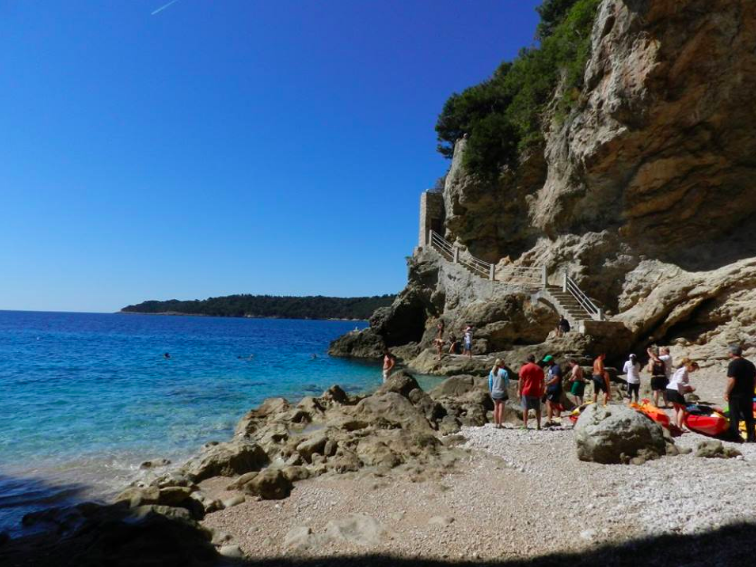
The feeling you had when you got on the plane back to Edinburgh:
Anxious – I was going home to responsibilities!
One word to describe Croatia:
> > Gorgeous. < <
Everything about it left me staring and wanting more.
A note from ATG on the wars that Becky mentioned:
Croatia, like many other Eastern European countries, has a long and complicated history, narrated by shifting ethnic and national identities. In the interest of keeping things simple and providing a brief synopsis, The Croatian War of Independence (1991-1995) resulted from the break up of Yugoslavia, the country that came into existence after WWI, formed from territories of the former Austro-Hungarian Empire. In 1963, it was renamed the Socialist Federal Republic of Yugoslavia (SFRY) and consisted of the six socialist republics of Bosnia and Herzegovina, Croatia, Macedonia, Montenegro, Slovenia and Serbia.
The collapse of communism coupled with rising nationalism in Eastern Europe during the 1980s created a period of political and economic turmoil that triggered the dissolution of the federation. On June 25, 1991 both Slovenia and Croatia declared independence, effectively ending SFRY’s existence. The Croatian War of Independence was fought between Croatians – who supported the country’s independence from the Socialist Federal Republic of Yugoslavia (SFRY) – and ethnic Serbs living in Croatia who opposed the secession and wanted Croatia to remain part of Yugoslavia. The war, referred to by Croatians as the “Homeland War”, was part of the wider Yugoslav Wars (1991-2001), a series of ethnically-based wars resulting from the break up of Yugoslavia. Characterized as Europe’s deadliest since World War II, they involved horrific war crimes and ethnic cleansing, leading to the death of approximately 140,000 people. For a more in depth history, see here.
I enjoyed your travelogue! I have friends that did a bike tour with Back Roads there. They were able to travel to many of the small islands. The beach the beach the beach. This is definitely on my list now.
Thanks for sharing
Jenna
Hi Jenna, thank you for your comment…a bike tour sounds amazing! It’s now on my list, too! Let me know if you go, I might just have to tag along 🙂